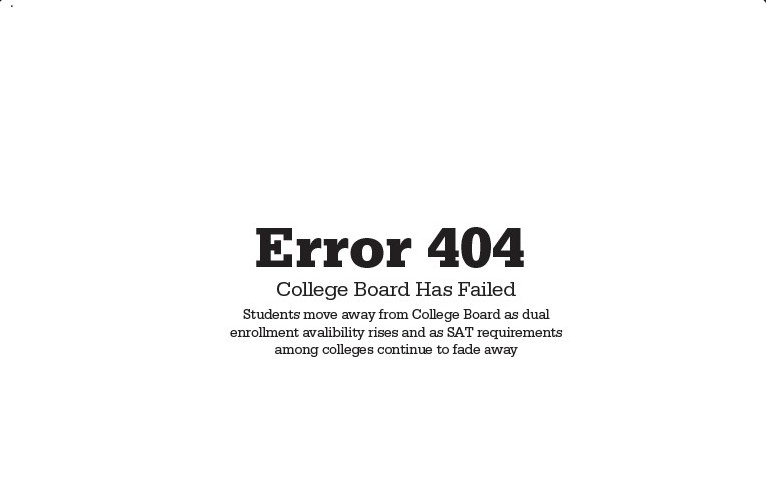Your Child’s Future is Under Construction
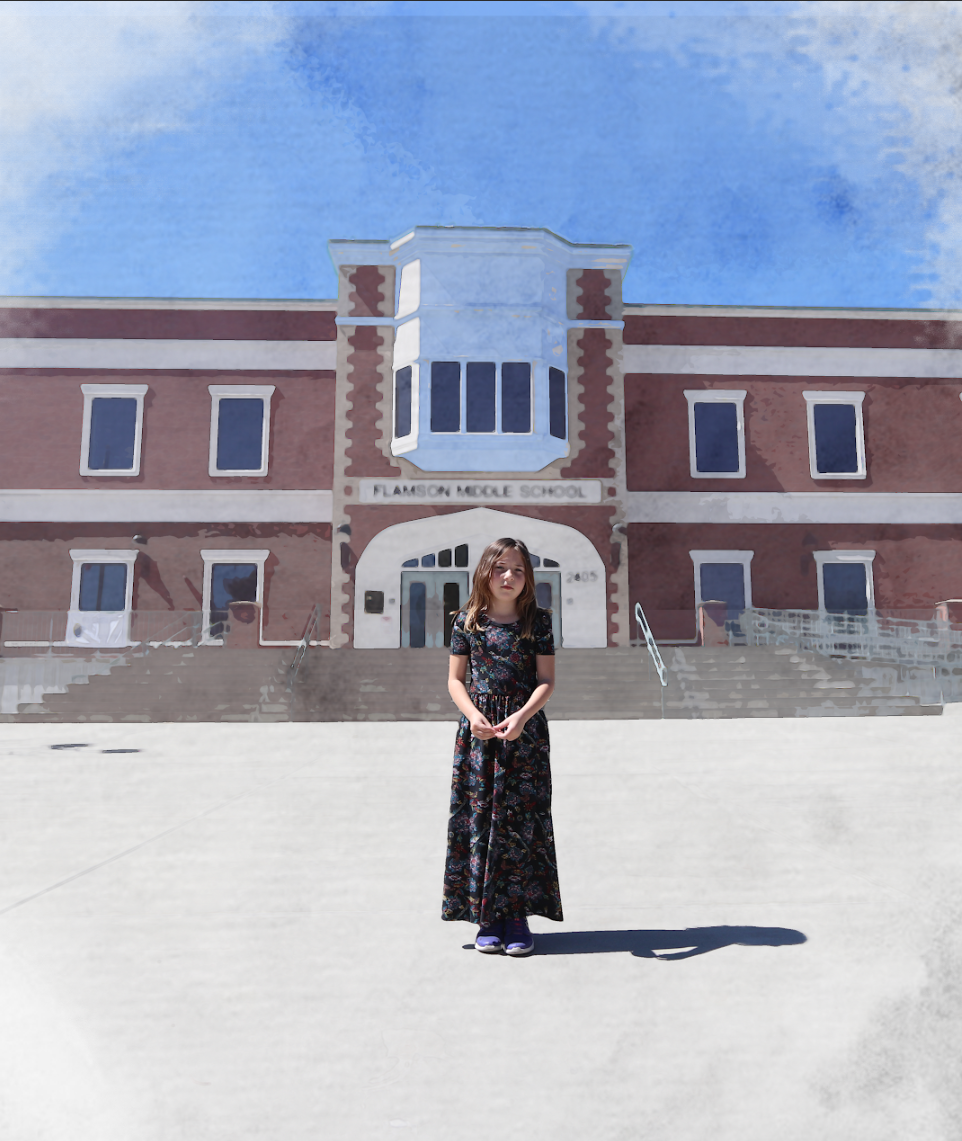

Flamson Middle School is taking over as the sole district middle school after a historic
vote of 5-2 on Feb. 14, 2023. The new Dual Immersion program will relocate to Daniel E. Lewis Middle School, transferring students that currently attend Georgia Brown Elementary for the start of 2024-2025 school year. This change was approved due to the discovery of a fault line located under the elementary school. Students and staff have stayed at the site for the remainder of the current school year. The vote to shut down the school, built in the 1940s, was held on Jan. 23, 2023 from a recommendation from the District Advisory Committee.
Site changes include, Flamson becoming the feeder school for the other five elementary schools: Kermit King, Bauer Speck, Winifred Pifer, Virginia Peterson, and Pat Butler and Lewis becoming the Duel Immersion School. For the coming school year attendance boundaries will define attendance for the 3,429 K-6 students of PRJUSD. All of the elementary schools will now include grades TK-6. Flamson will change to a 7th and 8th grade junior high school starting August of 2024.
As a sibling to a current Georgia Brown student Elliot Krames, former Georgia Brown student and now PRHS junior welcomed the moving of the Dual Immersion program to Lewis.

“It’s going to take them [ students] a minute to adjust, but I think in the long run, it’s going be a good decision.”
On the issue of attendance redistricting, Krames believes that new district rules will be an opportunity for parents to send their children to a school of their choice.
Assistant Superintendent of Business Services Brad Pawlowski felt the site changes are minimized as students age up at their current sites , “ Georgia Brown becoming a K-8 ,there’s an opportunity for students that are there in fifth grade. Now they’ll stay in sixth grade, and some can stay at seven, some can stay at eight. We think that will also reduce the number of students at Flamson.”. The dual immersion program will start as a K-6 school for the 2024-2025 school year, a K-7 school for 2025-2026, and a K-8 school thereafter.
In this model, sixth grade students will be able to have a transition year where they will be able to still have rotating classes, with one teacher for ELA and history, one teacher for science and math, and one teacher for an elective, but also have the chance to be leaders on their campus.
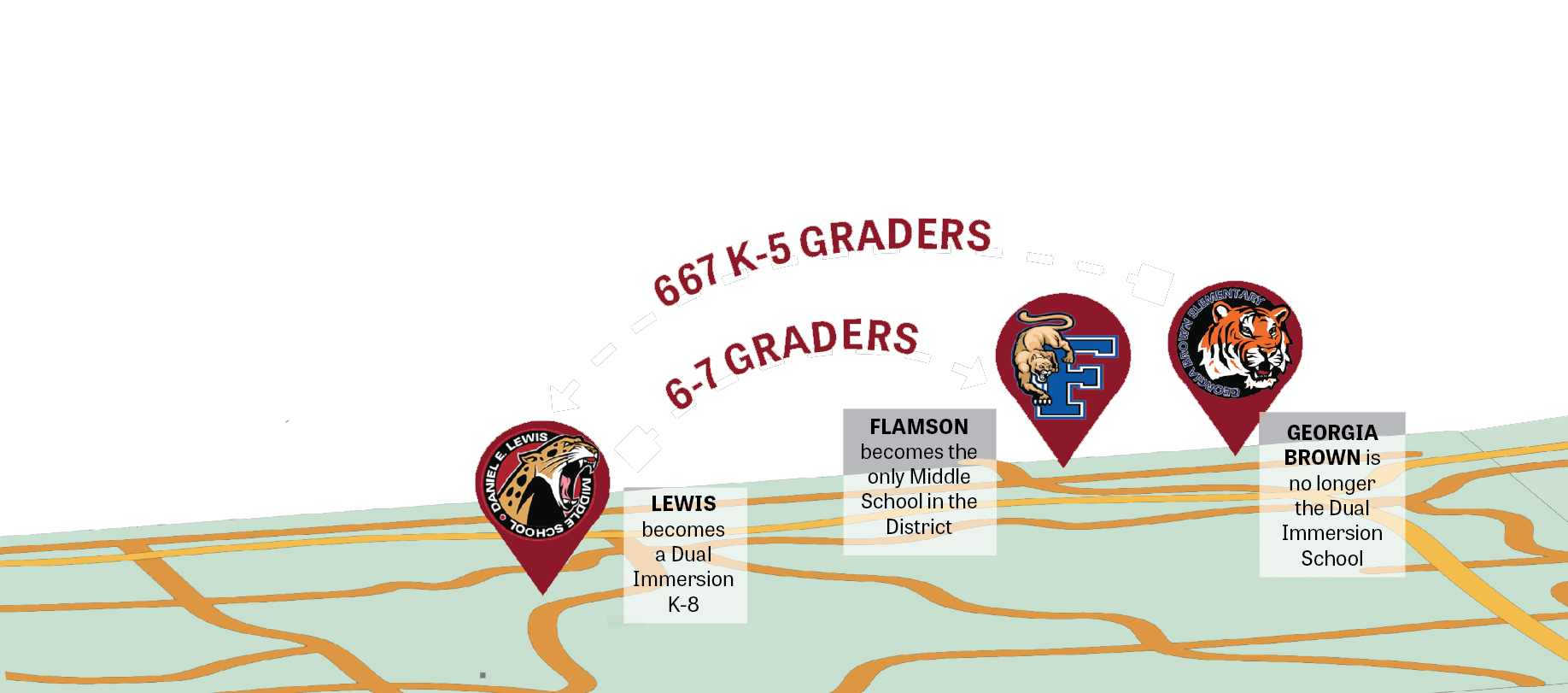
Assistant Superintendent Erin Haley believes that giving sixth grade students a year to be introduced to the typical six period day will be a benefit to them.
“We have seen a slight dip in performance for some of our 6th graders when transitioning to middle school. This semi-specialized model could be a wonderful transition year to better prepare our students for the six-period rotation they will have in junior high,” Haley said.
Dual immersion changes are also favorable, according to Pawlowski. “The dual immersion program is truly an immersive program. And students that are out of it for a short period of time, it may be hard for them to kind of come back into it. The principal felt that the best way to do that is just to progressively let the fifth and sixth become seventh and so on,” Pawlowski said.
The new site changes happening throughout the district brings to mind the question of what is going to happen to the current Georgia Brown campus. “There’s a lot of things floating out there but no solid answer on it yet,” Powlowski said. The district has fielded complaints about transporting students to new sites. But the changes do not necessitate more driving.
“There are some neighborhood kids, but if you talk with the principal, it’s very limited, that we’re walking to school there. And so it may be an inconvenience now for parents to drive to Lewis as opposed to George Brown. But they were already being transported. So if it’s still going to be a challenge, I totally get it. But I don’t think it’s going to be as significant as maybe some have thought,” Pawlowski said.
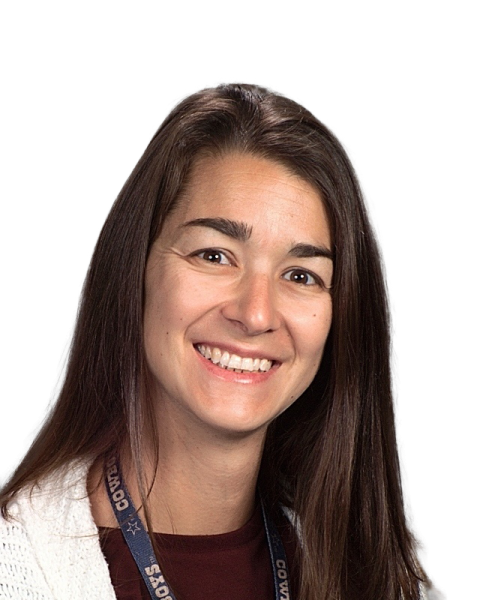
Alexandra Thompson, the Class of 2027 counselor, has a 7 year old in second grade at Georgia Brown. Both she and her husband are full time working parents, so the biggest impact of district changes is childcare.
“If I can drop my [child] off right as soon as I can, I can get here on time but after school the elementary school’s day is much shorter than the high school, and my husband doesn’t work in Paso, so childcare becomes our concern,” Thompson said.
Along with site changes comes the reconfiguration of the Lewis the new Dual Immersion school. In reconfiguring Lewis they have to make sure that upper grades like eighth and seventh graders aren’t put next to kindergarteners. Additionally, their is going to be a playground built for kindergarteners as apart of Lewis’ reconfiguration. There are many pros and cons to the changes that will come with the 2024-2025 school year. However, these changes bring opportunities to continue to support and enrich the students of the PRJUSD.

As Dual Immersion at PRJUSD looks to expand to 8th grade, some PRHS students and staff worry about the effect on native Spanish speakers.
The current location for the Georgia Brown campus is a neighborhood primarily consisting of a large part of our hispanic population in Paso Robles, providing an opportunity for these students, some of which speak majority Spanish, to continue speaking Spanish in school, and continue to learn in their native language.
Although some express worry that this program might have set them back on their English, and was much more beneficial for their English speaking counterparts.
“Speaking majority Spanish in school kind of enabled me to not learn English, I think” one anonymous student said. “It wasn’t necessary, and certain words and spelling are still hard for me.”
Sophomore Diana Ojeda went to Georgia Brown from TK to fifth grade. At home her family speaks Spanish, but at PRHS she primarily uses English. Sophomore Abraham Zavala went to Georgia Brown Elementary during Kindergarten through fifth. Zavala’s family speaks both languages at home.
Despite these differences, both students agree that during their elementary education years their Spanish skills were higher than their English language. Spanish is the native language for many students at Georgia Brown who come from Hispanic or Latino families.
Others however, think the Dual Immersion helped them both grow in their native language while also gaining necessary academic language in English.
The change also means that the surrounding neighborhood will change. The new location is walkable for field trips to Paso Robles High School allowing Georgia Brown students to easily take advantage of being able to visit for theater productions. The easy accessibility to the High School opens many possibilities for opportunities of collaboration. The new site will also be walking distance from several other elementary schools, offering the ability to travel between schools for sports, special events, or programs.
Jon-Paul Ewing, a science teacher at PRHS, has an eight year old in second grade at Georgia Brown Elementary School. He thinks that this change will be great for the students of Georgia Brown and he is definitely keeping his son at the school, however there are always winners and losers in these types of situations.
“I think it will be great for the students of Georgia Brown, and great for my family.”
— Ewing said.
Ewing believes that the more time the kids get to be in the program, the better for the kids. The goal is for them to become bilingual, so the more time they get to master that is preferred.
The new location does present transportation problems for the presently enrolled students who are walking distance from the current Georgia Brown site. The future students who will attend Georgia Brown will include a broader range of students within the community due to the lottery system the school district plans to use. This will save the parent tradition of camping overnight and waiting in a long line at the district office in order to get first dibs at the very popular program.
[sno-infographic id=”67226″ align=”left”]
The purpose of having schools in different neighborhoods is for easier accessibility to everyone. With the Georgia Brown campus moving there will be easier access to students from many neighborhoods , as the location is more centrally located. However, it’s unfortunate that while offering a wider and easier accessibility within the community the site change is displacing students of a population already facing barriers to their education.
At Georgia Brown 80% of students enrolled are minorities, as well as 76.9% are Hispanic or Latino. The Dual Immersion program is for students to become bilingual in both Spanish and English. These students often are introduced to Spanish at home within their families and get exposure in English at school. However, the move of Georgia Brown displaces many students who are already in a more vulnerable position to succeed academically.
The change in location of the elementary school will provide easier availability for students from many neighborhoods due to being in a more central location of our community and the usage of a lottery system for enrollment.
About 50 teachers will be moving sites next school year due to a PRJUSD board decision that will cause grade changes, site changes, and staff changes.
The current grade span configuration consists of elementary schools being grades k-5, middle schools grades 6-8, and the high school grades 9-12. Next school year, elementary schools will be K-6, and Lewis Middle School and Flamson Middle School will combine into one middle school, consisting of grades 7-8. The dual immersion program at Georgia Brown will move to Lewis’s current school site and will consist of a new format, grades K-8.
“There are pros and cons, so if we can focus on the pros and make what we can work well, it will be more successful,” District Superintendent of Human Resources Shauna Ames said.
PRJUSD schools have had the same structure since 1981, nearly 40 years. This is the largest district decision ever made, and the first time bringing a K-6 program to PRJUSD, a K-8 dual immersion program, as well as one 7-8 grade middle school.

Of the 50 teachers that will be moving sites next year, 30 are going from Lewis to Flamson, or from a current middle school position to a sixth grade position at an elementary school.
Classified staff will be moving from Lewis to Flamson, another position in the district, or lose their current position. Currently 3 classified staff members have lost their current position because it will not be needed next school year, but they have access to other open positions throughout the district.

Linda Berry, is the current attendance clerk for Lewis and is 1 of 3 classified staff that will be laid off with the closing of Lewis.
Luckily for Berry, she will have a job as an attendance clerk next year at Winifred Pifer elementary school. However, Berry is currently an 8 hour employee with benefits, and taking the job at Pifer will demote her to a 6 hour employee with no benefits.
“I could take the demotion or go on unemployment,” Berry said .
She chose to take the demotion and keep a job.
One of the biggest challenges Ames has faced is helping the staff members with their feelings on the changes. Teachers and staff from Lewis feel an attachment to the school and the closing of a historical piece of Paso Robles is causing sadness.
“Overall the staff have done an amazing job at expressing their concerns, worries, and unease, while at the same time remaining committed to the students of our district,” Ames said.
A $9.5 million budget has been allocated for the new changes, according to District Superintendent of Finances Brad Pawlowski. About $6.5 million will be going to Lewis to make it suitable for K-8 students, and $3 million of it will be going to Flamson for restructuring and adjustments.
Ames has hopes that even though “there will be added expenses to make this all happen, over time it should be saving costs to have one less campus to maintain and staff.”
The benefits of these changes may not arise instantly, but Ames predicts overtime there will be unintended positive effects, the with the help of staff, the district will see great results.
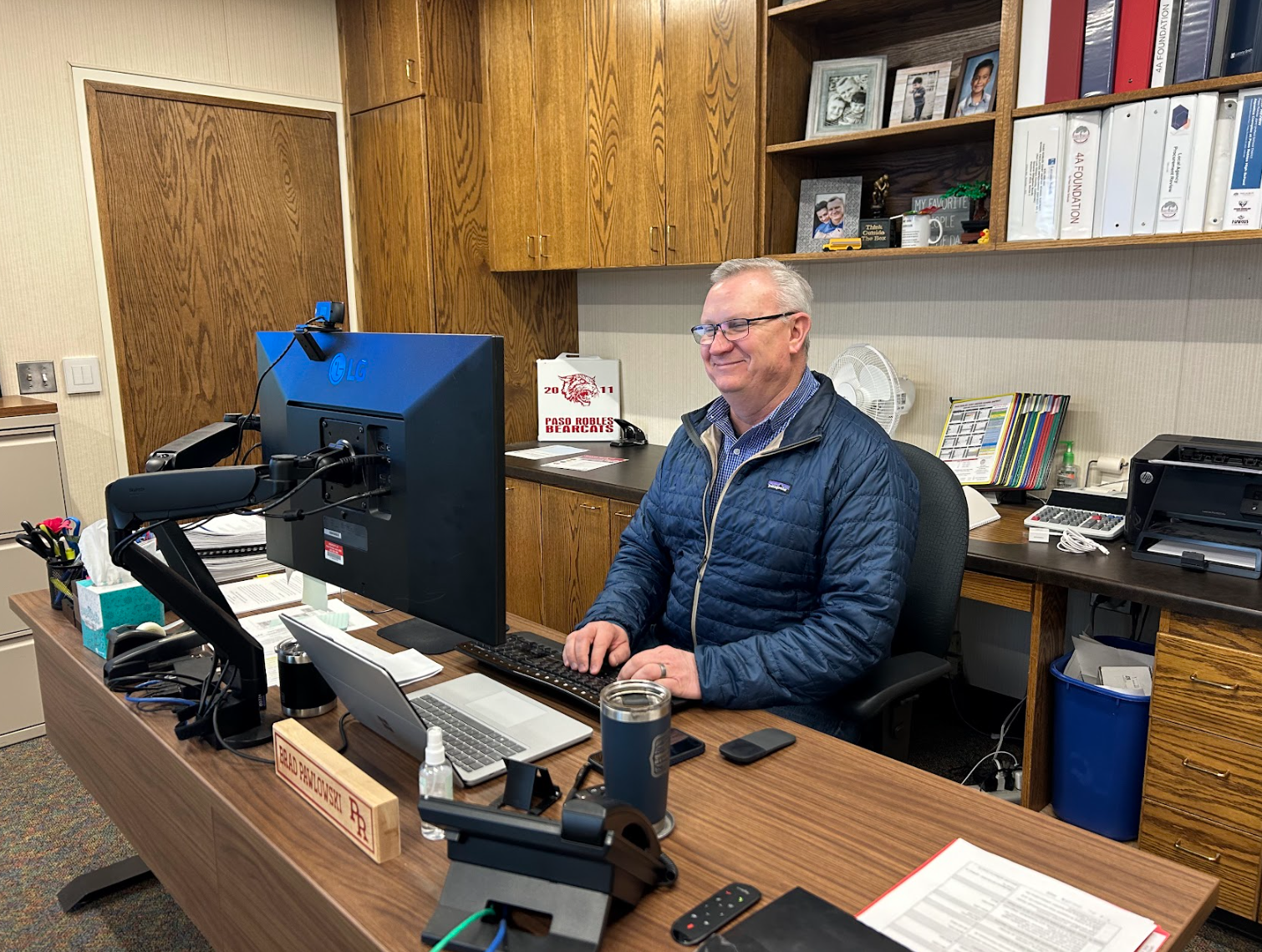
The many plans for change coming out of the District Office have been picked apart by the community, inspiring hope for these developments, as well as criticism for their “selfish” choices. Delving into the business side, the budget and expense plans that back up these decisions are complex and well-researched, and as they say, “the numbers don’t lie”.
Measure M funding from voters, time, the pool question, and the surprise loss of the Georgia Brown property have pushed PRJUSD into critical financial times and scrutiny, with decisions overseen by the Board of Trustees and Chief Business Officer and Assistant Superintendent Brad Pawlowski.
Board member Joel Peterson explains the difficulty of these decisions, “It’s easy for people to essay these are easy financial decisions, but they are really tough ones that affect families, teachers, and students. The board really weighs all of these factors when making hard decisions.”
In 2016, Measure M was put onto the ballot, a $95 million bond that would be used for the district to upgrade and renovate elementary school needs, as well as building a pool for usage for all students. It received a successful 57.5% voting rate, 2% over the number needed to pass.

With $62 million of bond money so far, the district has rebuilt and re-designed the Glen Speck and Marie Bauer campuses, as well as building a 10-classroom facility at Flamson. Around $33 million remains for the Georgia Brown renovation and pool build.
In 2022, while planning the Georgia Brown re-design, engineers discovered the oft-mentioned seismic anomaly, making the site possibly unsafe by state law and unaffordable to solve at an estimated $200-400K. A seismic solution would have to be completed while the campus is vacant, only giving the small window of summer to complete this project. The district is hesitant to sell this property due to the fact that there may be underlying issues that could cause danger.
The district made the decision to move the Georgia Brown site to Lewis Middle School on February 13, 2024. Additionally, Flamson will become the new sole junior high with around 800 7-8 graders expected in the 2024-25 school year. The old Lewis site is set to be renovated in order to accommodate around 700 K-8 students starting next school year. Portables will be added, classrooms will be refreshed, and additional resources will be provided for the younger grades. These renovations are quoted to be around $9-10 million, leaving ~$20 million in Measure M funds for the pool.
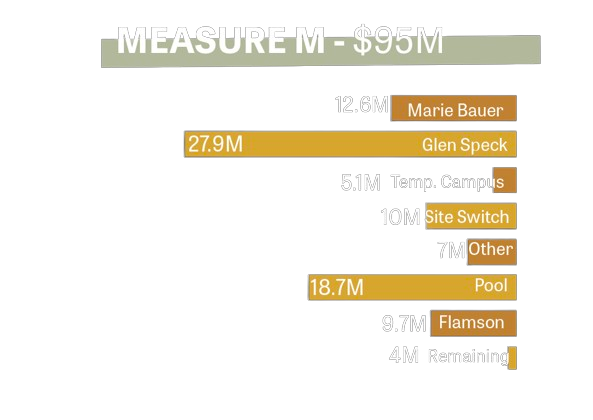
When these changes were originally budgeted six years ago, the district had accounted for both a warm-up pool as well as a regular competition pool. Prefabricated pool tanks and equipment were purchased in 2018 and have sat in storage since. The smaller practice pool eventually had to be sold off in order to have enough money to build the first one. This old plan had totaled $6-8 million, and has since doubled, due to inflation and COVID. The current plan to build a pool facility is budgeted around $16 million, and set to break ground this year on a plot of land on the western side of the PRHS campus.
Now, all of these renovation costs come from the Measure M funds, which is completely separate from the overall PRJUSD budget. The majority of this budget goes to labor: which is paying the salaries of teachers and admin – around 85%. The other 15% is divided between materials, services/contracting, and capital outlay.
Increasing the budget for renovations can be done through many ways, too. One is proposing another bond, similar to Measure M, to keep up with the constant constructions needed in the district,
“We’re going to have a new superintendent … starting July 1st. We also have a board election that’s coming up in November. So there’s going to be some big changes in the face of the district over the next 10 months or so. I think it’s important that we get past those big changes first, before we bring up the idea of another bond,” Pawlowski shared.
Additionally, developer fees, which developers of land have to pay per percentage of square foot, can contribute to this budget. Near the high school, many apartments and houses are being built, which could bring in around $20 million in the next 7-10 years.
The changes facing our district bring many factors to the surface: parents, money, teachers, and of course, the children impacted. Handling them is a delicate process, one that takes careful consideration and many people. However, understanding the financial aspect can simplify and separate the situation.
Your donation will support the student journalists of Paso Robles High School. Your contribution will allow us to purchase equipment and cover our annual website hosting costs.















